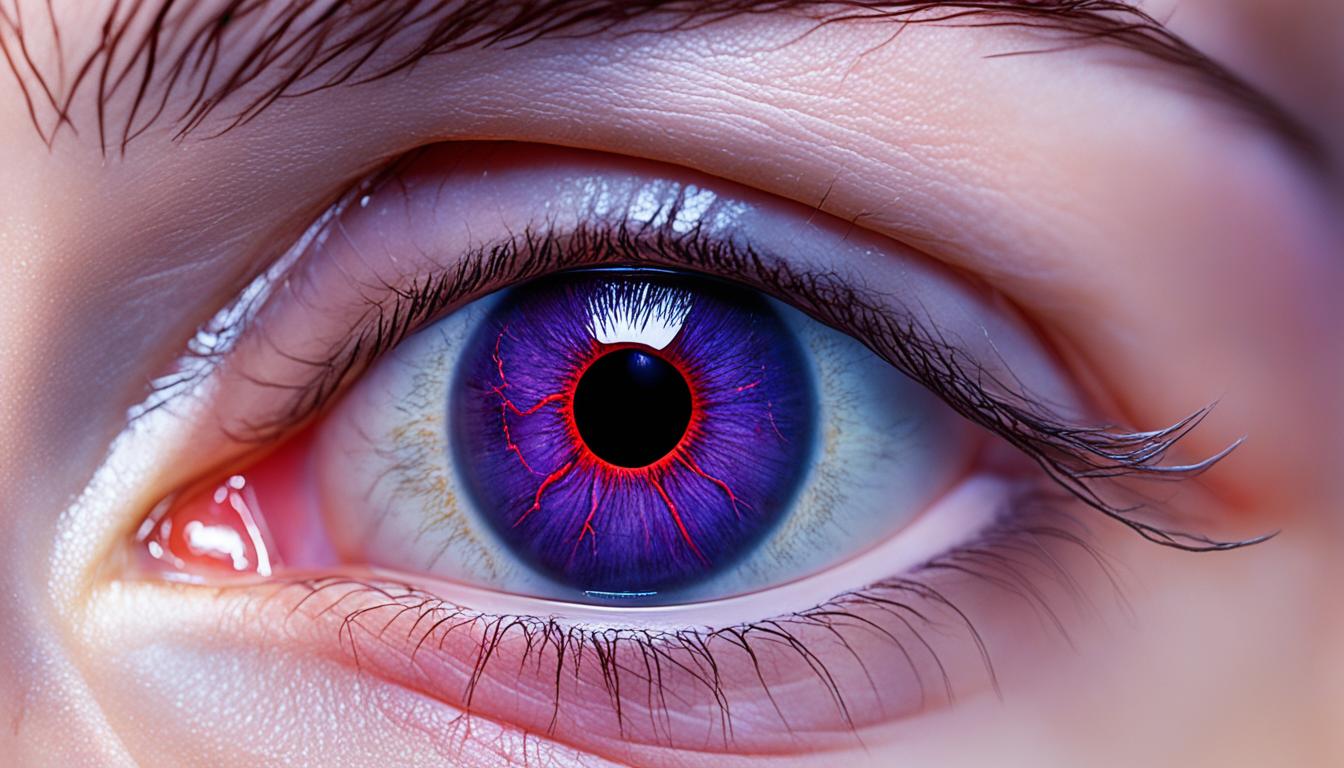A broken blood vessel in the eye is known as a subconjunctival hemorrhage. It makes the eye’s white part look red. Many things can cause this, like trauma or high blood pressure.
There are a few signs of a broken blood vessel in the eye. You might notice redness or see a blood spot. But, it doesn’t usually hurt or affect how well you can see.
Diagnosing this issue involves an eye exam. An eye doctor will look at your eye and ask about recent injuries or health problems.
For most cases, self-care is enough. Putting a cold cloth on your eye can help. It’s also a good idea to rest your eyes by not reading too much or using screens for too long.
In rare situations, stem cell therapy might be an option. This new therapy helps repair the eye’s blood vessels and could speed up healing.
Key Takeaways:
- A broken blood vessel in the eye, or subconjunctival hemorrhage, is characterized by blood on the white part of the eye.
- Causes of a broken blood vessel in the eye can include trauma, high blood pressure, eye strain, and certain medical conditions.
- Common symptoms of a broken blood vessel in the eye include eye redness, eye burst vessel, eye bleeding, eye blood spot, conjunctival bleeding, and red eyes.
- Diagnosis is usually done through a comprehensive eye examination by an ophthalmologist.
- Treatment options include self-care measures, such as applying a cold compress, and in severe cases, stem cell therapy may be considered as a potential treatment option.
Causes and Risk Factors of Broken Blood Vessel in Eye
A broken blood vessel in the eye can be due to several health issues. For example, having diabetes can alter blood vessels. This makes the eyes more prone to breaking blood vessels. High blood pressure is another factor. It can lead to problems in the retinal arteries or veins, causing sudden vision loss.
Autoimmune illnesses like lupus and rheumatoid arthritis play a role too. They can harm blood vessels and increase the chance of eye issues. Some genetic disorders, such as Von Hippel-Lindau syndrome, can also be a cause. These disorders may lead to eye tumors and vision problems.
Managing these health issues is crucial. It helps in avoiding the occurrence of broken blood vessels in the eye.
Treatment and Prevention of Broken Blood Vessel in Eye
Regular eye checks are very important. They help spot any eye problems early, like broken blood vessels. It’s a good idea for grown-ups, especially those with health issues, to get their eyes checked often.
If you have diabetes, it’s crucial to keep your blood sugar and pressure in check. This can help avoid eye problems. Also, managing conditions like high blood pressure and autoimmune diseases lowers the risk of eye issues.
Dealing with broken blood vessels includes simple steps like using a cold compress. This can reduce symptoms and help the eye heal. In more serious cases, a doctor might suggest retinal laser therapy to stop further issues.
Today, stem cell therapy is being looked into for treating broken blood vessels in the eye. It’s good for those with eye conditions to keep their health in check. They should also get treatments as needed to avoid eye problems.

